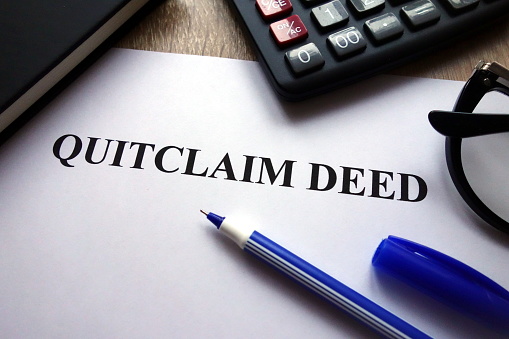When it comes to buying, selling, or transferring property, there are various methods that you can use to ensure the operation goes smoothly, and one of those methods is something called a quitclaim deed. But what exactly is a quitclaim deed, and when should you use one? In this blog post, we will look at what a quitclaim deed is, when it’s appropriate to use one, and how it differs from other types of deeds. We will also go over creating a quitclaim deed and some of the key things you need to keep in mind when using one. So, without any further delay, let’s get on with it!
What is a Quitclaim, And What Does it do?
A quitclaim deed, which some call a “quit claim,” is a legal document that transfers property ownership from a grantor to a grantee. A grantor is a person ready to transfer his/her property. A grantee, on the other hand, refers to the person receiving the property. A quitclaim deed is often used when the grantor is not certain of their legal property ownership or when the grantee is not concerned about the grantor’s legal ownership. With a quitclaim deed, the grantor typically gives up any claim they have to the property. This means that they are not making any guarantees about who owns the property or whether there are any other claims.
When to Use a Quitclaim Deed?
Although this method is considered the fastest and, to a large extent, the easiest method of transferring ownership from one person to another, it also has its limitations. Hence we won’t recommend that you use it in every situation.
So, let us examine some situations that will warrant the use of a quitclaim deed;
- A quitclaim deed may be used when a grantor is uncertain of their legal ownership of the property: If the grantor is unsure of their legal ownership of the property, a quitclaim deed can be used to transfer ownership without making any guarantees about the title.
- A quitclaim deed can also be used when a grantor wants to remove themselves from the property title. This makes the transfer of property ownership from one person to another possible.
- Also, a quitclaim deed may be used when a grantor wants to add someone other than him/herself to the property title.
- Lastly, quitclaim deeds can be used by a property owner to change the property’s ownership structure.
What is the Difference Between Quitclaim and Warranty Deeds?
You know that both quitclaim deeds and warranty deeds deal with transferring property ownership from one person to another. But you may not know that there is a significant difference between the two types of deeds. One of the key differences between the two is that a quitclaim deed does not include any guarantees about the property. While a warranty deed, on the other hand, includes certain guarantees that the grantor has clear title to the property and that there are no other claims to it.
Another difference is that property ownership only gets transferred from the grantor to the grantee in a quitclaim deed. On the other hand, a warranty deed transfers ownership and provides certain warranties or guarantees from the grantor to the grantee. To perfectly understand this warranty deed, if you buy a piece of equipment, the warranty label you see on the carton is the warranty deed. The duration of this warranty often varies depending on the company or type of product. Sometimes, the duration could be only a year or 6 months.
How Does a Quitclaim Deed Work?
As a grantor, assuming that you want to use a quitclaim deed to transfer the ownership of a piece of property to another person, you will have to sign the document and then ensure that it gets recorded with the county/province in which you reside. The purpose of doing this is to ensure that the change of ownership is publicly recorded. Once the quitclaim deed is recorded, the grantee becomes the legal owner of the property.
However, it’s important to note that a quitclaim deed only transfers property ownership; it doesn’t clear up any potential issues with the property’s title. It’s not uncommon for a quitclaim deed to be used in conjunction with other legal documents, such as a quitclaim deed and a quitclaim deed release, to transfer ownership and clear up any potential title issues fully.
How to Create a Quitclaim Deed
Creating a quitclaim deed is not the hardest thing in the world; the process is very straightforward, provided that you follow all the steps. If you want to create a quitclaim deed, you will first complete a quitclaim deed form. If you live in British Columbia, you can obtain a quitclaim deed form from a lawyer or legal stationery store. You can also find quitclaim deed forms online from legal document providers or the Government of British Columbia’s website. This deed form typically includes information about the transferred property, the grantor, and the grantee.
Conclusion
As we said earlier, a quitclaim deed is a legal document to transfer ownership of a piece of property. It is used in various situations, but most importantly, where the grantor is wondering if they have a legal right to transfer ownership of the property or if they want to transfer ownership without making any guarantees.
Lastly, the process is something you can’t rush. Hence it will be advisable that you consult with a lawyer before completing the form to ensure that it is done correctly and that it is appropriate for your specific situation.
If you’re unsure whether a quitclaim deed is right for your situation, an experienced real estate attorney can help you decide and prepare the appropriate paperwork. Need assistance with preparing a quitclaim deed? Contact Saanichton Law Group today at 2505440727 to discuss your options with one of our knowledgeable attorneys.




